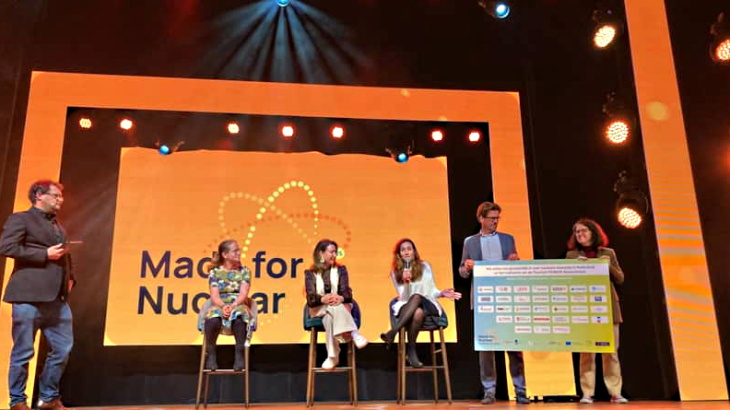EDF said it commissioned the report "to communicate the potential life cycle environmental impacts associated with the construction, operation, and decommission of the future HPC nuclear power plant, in terms of electricity output generated and then delivered to a downstream user." The study, it said, "follows internationally agreed standards and is thought to be one of the most detailed ever undertaken for a nuclear power station."
The company said it wanted to prepare a lifecycle carbon assessment (LCA) for HPC over its life, "aligned as closely as possible to the relevant product category rules (PCR), and to communicate these results publicly." PCRs set out the category-specific requirements for conducting LCAs and reporting results in environmental product declarations to internationally recognised standards.
EDF commissioned Ricardo to undertake an LCA in accordance with PCR 2007:08 Electricity, steam and hot/cold water generation and distribution - also known as the Electricity PCR - as much as possible, using the best available data from sources such as the Development Consent Order submission and data recorded during construction so far. This work assesses HPC's impacts across its life cycle, considering: the activities 'upstream' of generation, such as the procurement of raw materials and fuel fabrication; the 'core' activities associated with constructing, operating and decommissioning HPC; and the 'downstream' activities associated with distributing electricity to customers.
The study - titled Life Cycle Carbon and Environmental Impact Analysis of Electricity from Hinkley Point C Nuclear Power Plant Development - shows the global warming potential associated with generating 1kWh of net electricity at HPC as 5.49 grams of CO2 equivalent, whilst that associated with a downstream user receiving 1kWh of electricity generated by HPC has been calculated as 10.91g CO2 equivalent once the impacts of the transmission and distribution networks are taken into account.
By comparison, the Intergovernmental Panel on Climate Change's median estimate for offshore wind is around 12g CO2 equivalent per kWh and 48g CO2 equivalent per kWh for large-scale solar energy. All are drastically lower than coal at 820g CO2 equivalent per kWh and gas at 490g CO2 equivalent per kWh.
Hinkley Point C, construction of which began in December 2018, is composed of two EPR reactors of 1630 MWe each and Sizewell C is proposed to be an exact copy from the ground up, EDF Energy has said. Sizewell C has planning permission and awaits a final approval from the UK government.
"This detailed study confirms the low-carbon credentials of new nuclear at Hinkley Point and Sizewell," said Humphrey Cadoux-Hudson, managing director for Sizewell C. "By replacing fossil fuel power with low-carbon electricity which doesn't depend on the weather, Hinkley Point C and Sizewell C will support the expansion of renewables in the UK and make a big contribution to lowering emissions to net-zero."
UN report supports findings
The findings of the EDF study are in line with those of a report published recently by the United Nations Economic Commission for Europe (UNECE). That report confirms that nuclear technology as a whole has the lowest lifecycle carbon intensity of any electricity source, ranging from 5.1-6.4g CO2 per kWh.
The UNECE report also found nuclear has the lowest lifecycle land use, as well as the lowest lifecycle mineral and metal requirements of all the clean technologies.
"Here we have a detailed, scientific assessment confirming nuclear as a green and sustainable technology, that uses less carbon, less land, and less material than any other," said Tom Greatrex, Chief Executive of the Nuclear Industry Association. "If we are serious about cutting emissions and meeting net-zero targets, we must act on the science and build new nuclear alongside other low-carbon sources of energy."

-2016.jpg)




_69218.jpg)
_27928.jpg)

_76087_55556.jpg)




